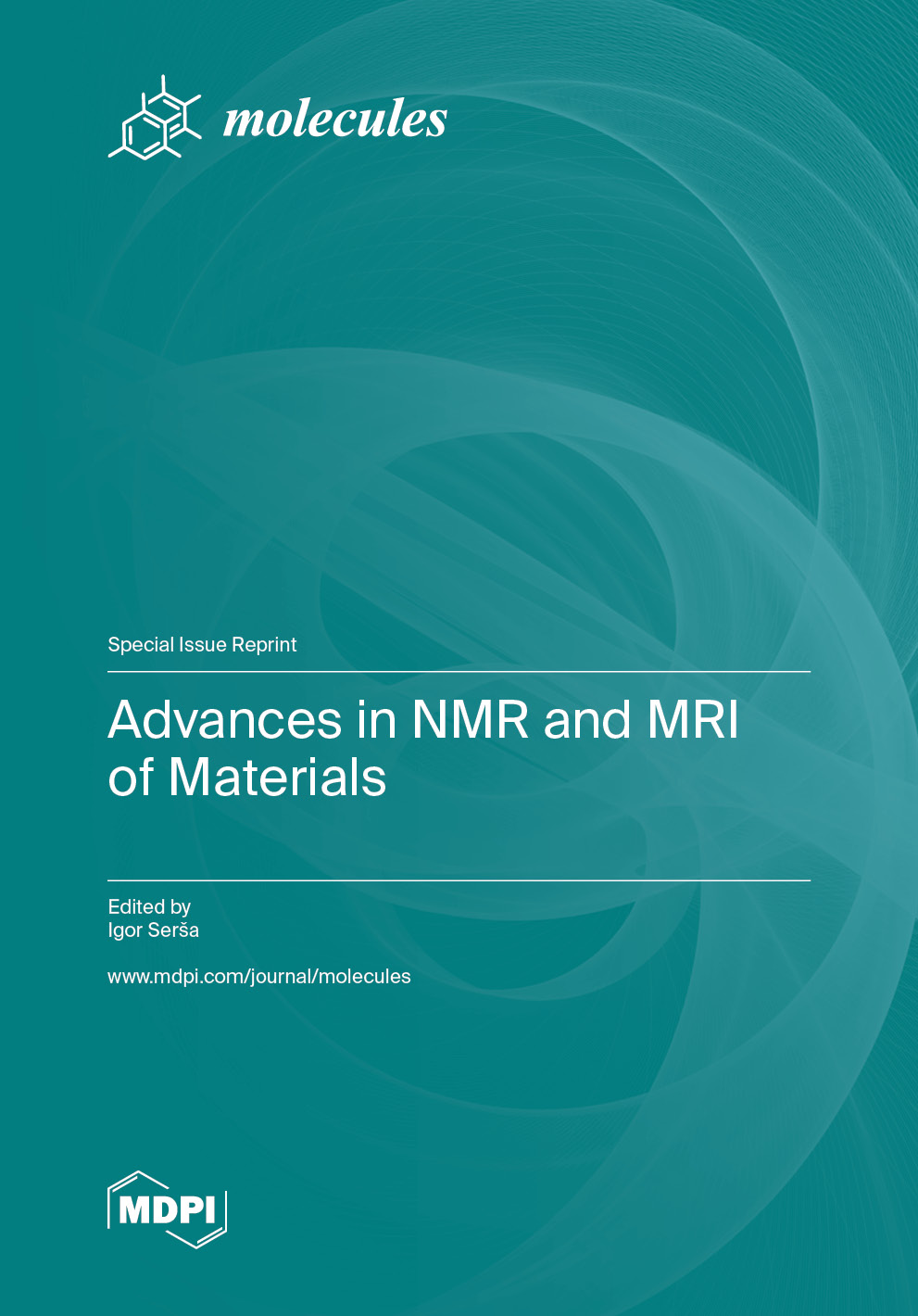Advances in NMR and MRI of Materials
A special issue of Molecules (ISSN 1420-3049). This special issue belongs to the section "Materials Chemistry".
Deadline for manuscript submissions: closed (31 March 2023) | Viewed by 53227
Special Issue Editor
Interests: magnetic resonance microscopy; current density imaging; thrombolysis; porous materials
Special Issues, Collections and Topics in MDPI journals
Special Issue Information
Dear Colleagues,
Nuclear magnetic resonance (NMR) and magnetic resonance imaging (MRI) are two fast-developing fields with innovation in methods and a continuous evolution of hardware, which enables a wide range of applications in diverse scientific fields, including materials science. State-of-the-art scientific papers on NMR/MRI of various types of materials define the interdisciplinary nature of research field and its potential applications. Often, these papers are published in specialized journals, which becomes cumbersome for the readers and makes it harder to grasp the subjective goals of the manuscript and related field overview. Therefore, such publications acquire only partial attention, and that too from the limited scientific community. For genuine readers, this Special Issue will present an attractive opportunity to sequentially and more easily obtain information concerning the recent advances of NMR/MRI in materials science. For the authors, it will be an appropriate choice to publicize their results and classify themselves as active members of the scientific community. This Special Issue shall broadly contain original scientific contributions, focusing primarily on the theoretical and experimental arrears of NMR/MRI, as indicated by the keywords. Review articles by experts in the field shall also be warmly appreciated.
Prof. Dr. Igor Serša
Guest Editor
Manuscript Submission Information
Manuscripts should be submitted online at www.mdpi.com by registering and logging in to this website. Once you are registered, click here to go to the submission form. Manuscripts can be submitted until the deadline. All submissions that pass pre-check are peer-reviewed. Accepted papers will be published continuously in the journal (as soon as accepted) and will be listed together on the special issue website. Research articles, review articles as well as short communications are invited. For planned papers, a title and short abstract (about 100 words) can be sent to the Editorial Office for announcement on this website.
Submitted manuscripts should not have been published previously, nor be under consideration for publication elsewhere (except conference proceedings papers). All manuscripts are thoroughly refereed through a single-blind peer-review process. A guide for authors and other relevant information for submission of manuscripts is available on the Instructions for Authors page. Molecules is an international peer-reviewed open access semimonthly journal published by MDPI.
Please visit the Instructions for Authors page before submitting a manuscript. The Article Processing Charge (APC) for publication in this open access journal is 2700 CHF (Swiss Francs). Submitted papers should be well formatted and use good English. Authors may use MDPI's English editing service prior to publication or during author revisions.
Keywords
- NMR spectroscopy
- NMR relaxometry and diffusiometry
- MRI and MR microscopy
- Porous materials
- Biological tissues
- Wood
- Food and drugs
- Batteries







